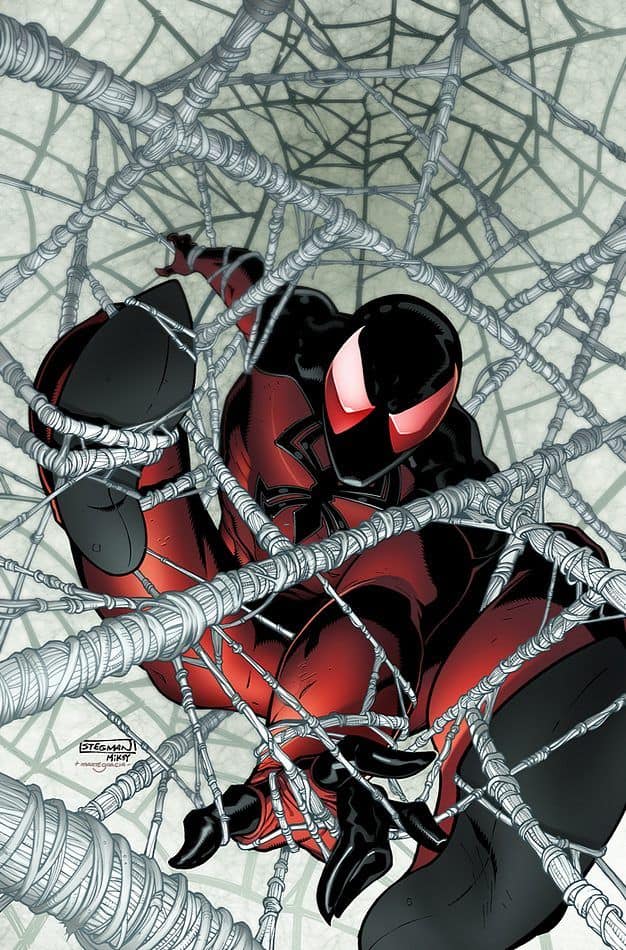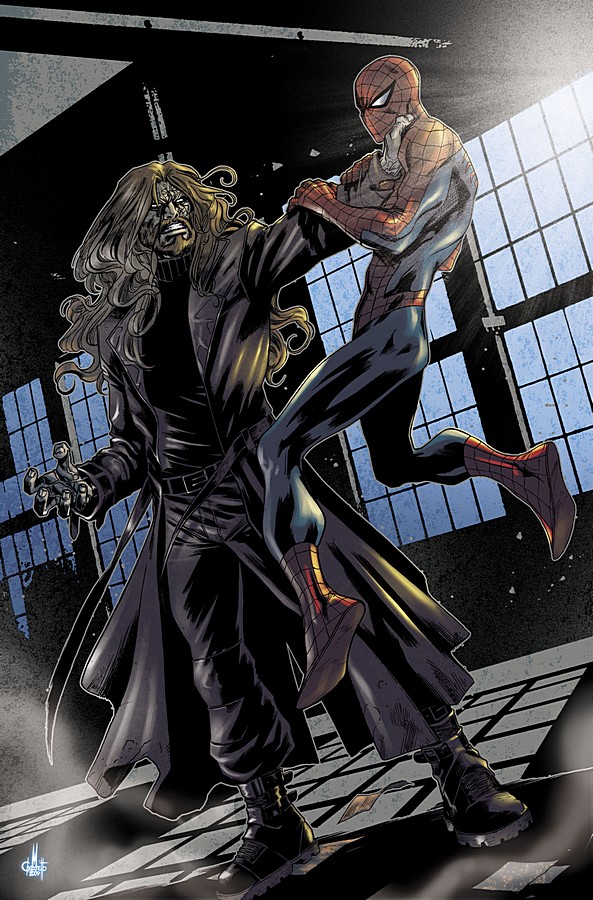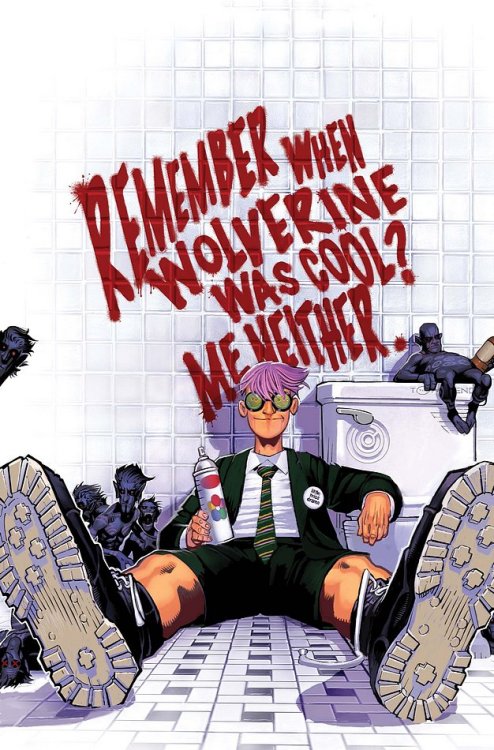 Action Comics 3
Action Comics 3 has generated some criticism for its lack of, well, action.
It's a criticism that only works when you compare it to the first issue, which was essentally a 40 page chase scene with very few breathers. When you take the time to break
Action 3 down, there's actually a lot going on here:
1. Krypton's data network is infiltrated by Braniac and his "Terminauts" in flashback.
2. Kal-El's grandmother is seemingly killed by one of the Terminauts.
3. Kandor is shrunk just as Lara-El narrowly escapes with baby Kal in hand.
4. Inspector Blake stops by Clark's apartment to harass him for taking on The Man.
5. Clark's landlord discovers his S-shield safety blanket and deduces he's from outer space. Maybe.
6. Superman is outed as an alien by Mr. Glenmorgan.
7. Clark has gotten an offer from
The Daily Planet, but remains loyal to
The Star.
8. A crazy but possibly not so much homeless lady sees the ghost of a white dog watching over Clark--Krypto?
9. One of the condemned building squatters from
Action Comics 1 blames Superman for losing the only home he had.
10. Clark has a mysterious informant named "Icarus" pushing him to take Glennmorgan down.
11. There's an anti-Superman rally.
12. Superman saves a girl from getting run over by a truck and the public attacks him with bottles and bricks.
13. Clark apologzies to a picture of Ma and Pa Kent for failing them.
14. Clark stops by Mr. Glennmorgan's automated train driver factory, which is then invaded by Braniac's "Terminauts."
15. John Corben goes through with the steel solider experiment, his heart explodes and he's possessed by Braniac.
So yeah, clearly
nothing happens. Or as a friend of mine so aptly puts it,
"This wasn't an issue featuring Clark, Lois, and Jimmy sitting around having a meaningless conversation over coffee about who might play them in a movie; this was character and plot development." Incidentally, if they did have that conversation I think it's pretty obvious: Daniel Radcliffe as Clark, Rupert Grint as Jimmy, and Emma Watson as Lois. :)
At any rate, I'm okay with the lack of a physical confrontation. This issue is all about escalation. But with the Terminauts on the loose and Metall-iac in play, I predict
Actions Comics 4 will be a balls-out slugfestapalooza that would have Arnold Schwarzzenegger begging Grant to take things down a notch.
Speaking of logical extremes, "World Against Superman" takes his dual nature to a level that makes Richard Donner's films and all ten seasons of
Smallville seem tame by comparison. Don't worry, everything you could love about that dynamic is very much intact. Superman is still struggling to reconcile his human and alien heritages. But this is Morrison, so even his worlds have worlds.
Which is why
Action Comics 3 might be light(er) on action, but it's a triumph of atmosphere. Morrison uses every tool at his disposal to show not just how Krypton is different from Earth, but how Metropolis is different from itself. The divide isn't limited to Metropolis' industrial district and its dark underbelly, though that's appreciated. It's as if he's going out of his way to give every facet of Clark's life a distinct aesthetic.
The result is that when Clark walks by a strip club that could have been lifted straight from Miller and Mazzcchelli's
Batman: Year One, it becomes something much different by contrast. Miller's strip clubs are superficial to Gotham's soul at best, like a wart on a witch's nose. Morales' seedy district, on the other hand, is more akin to the foot blisters Metropolis developed when it sprinted into the future.
For all the times he's stopped by Suicide Slum to give inspirational speeches to impoverished kids, this feels like Superman at the height of multiculturalism. When Clark walks by a prostitute on the sidewalk, he does so casually, not as a moral busybody but as someone familiar with poverty. He's an American Christ, a god walking among us, so steeped in the affairs of men that he's just as likely to pass by as walk with his fellow man, but he'll never go
through you.
Morrison's Kent bridges worlds with impossible ease and unlikely difficulty. Now that Clark remembers his short life as Kal-El down to the last detail, the long dead Krypton seems a stone's throw away. But when he crosses from downtown Metropolis into a cafe stocked with middle class professionals, on the other hand, he might as well be taking a Boom Tube to get there. It's like stepping into another world.
Which brings us the other common criticism of AC3, which is that it's too compressed. I tend to agree that the narrative occassionally comes across as disjointed, but intentionally so, reaching a near feverish pitch as Clark's worlds come crashing together. Some of the most striking moments arise from abrupt transitions that don't feel out of sequence so much as they
transcend it.
Take the sequence where Clark is at the cafe with Lois and Jimmy for most of two pages. Traditionally, the cafe conversation would end with a clear verbal marker ("I'm headed off to work on that story now") and wait to change locales until the next page. Sometimes that verbal marker will appear in caption against the image of the protagonist's new location. Instead, Morrison abruptly transitions Clark from his cafe conversation to a park bench between the space of the last two panels.
This single panel consists of a homeless woman telling Clark a white ghost dog is watching over him, and covers his startled reaction. The result is that we feel Clark's disorientation in a way that we wouldn't if Morrison had followed a conventional page layout. By the time we see Clark on the following page, he's walking through downtown in the middle of a phone conversation.
Clark only appears in three panels on the next page, but there's a lot going on:
Panel 2. A smiling Superman saves a girl from an oncoming truck.
Panel 4. An angry mob attacks a hurt and confused Superman.
Panel 5. Clark apologizes to a picture of Ma and Pa Kent from his apartment, where his Superman shirt sits in a trashcan.
There are quite a few gaps to fill as readers, like when he changed to Superman, where the mob came from, and how he dealt with them before he went to his apartment and threw his costume away. As a result, the reader shares in Clark's feeling of being overwhelmed, like moving from dream to waking nightmare to crushing reality in a matter of seconds.
In terms of craft, this might be Morrison's best issue of ACTION yet. And for my money, it plays with time in the best possible way. Which is good for DC, because I felt like I got $4 of story out of twenty pages. Morrison's narrative doesn't just lack the extra page content of ACTION 1 or the backup feature coming in ACTION 4.
It
transcends them. :)










